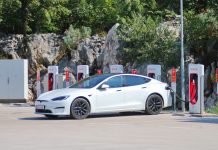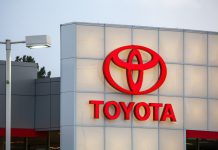The Used Vehicle Value Index published by Manheim reports that total used vehicle sales were up 69% year over year in April, pushing the used SAAR for the month up to 41.0 million units and the used retail SAAR up to 22.4 million. The explosive growth in used vehicle sales over last year’s weak retail in the midst of COVID-19 responses has inevitably caused both wholesale and retail prices to climb at unprecedented rates, and used inventory is growing in scarcity.
Manheim has tracked prices by segment at auctions, and the overall wholesale price has risen 54.3% year over year. Luxury cars were at the lowest rate of increase at an astounding 41.8% while vans, compact cars, and SUVs/CUVs were nearer to 50%. Midsize cars rose in wholesale pricing by 51.6% while pickup trucks have gone haywire at auction, taking 77.9% more per unit than the same month last year.
Factors for increased wholesale vehicle costs
The abnormal sales behavior clearly stems from certain ongoing stimuli in the auto retail industry, combining new, used, and fleet.
Reduced used inventory levels
Used cars are spending much less time on the lot than they did one year ago, or even before that. Normal used car retail supply is around 44 days, peaking in April 2020 at 115 days’ supply. At the end of April 2021, used retail supply stood at 33 days, showing an extremely active pre-owned market. At auction, wholesale supply is normally around 23 days, but that also dropped to 17 days by the end of April.
Wholesale selection is becoming less saturated and the result is higher prices to purchase the units most dealerships desire, naturally.
Below average new car inventory
The used car market has been fueled by a red-hot new car industry that can’t keep up with supply. Above-average sales rates have combined with lower factory output due to the microprocessor chip shortage, leaning out the available new cars ford dealers to sell.
There doesn’t seem to be any immediate relief coming for manufacturers who are struggling to supply dealer lots worldwide, and the lack of new cars is pushing purchasers toward the pre-owned market, especially for models in the one- to three-year-old range.
Rental companies entering used market
Slumping fleet sales have begun to pick up. As the economy re-opens gradually and Americans are ramping up travel domestically, rental cars are in short supply. That’s compounded by the Hertz bankruptcy mandate that forced a sell-off of rental inventory as well as pandemic-related inventory trimming by other rental companies.
Typically, rental companies would purchase new units from the manufacturer at deeply discounted rates, but with new units in extremely short supply, they’re turning to low-mileage and recent model-year pre-owned units to flesh out their inventory.
The proof of a rental car shortage is in the climbing prices – standard-fare supply and demand. Reports in the Chicago Tribune point to an average four-day rental demanding $388 on Hopper, or $97 per day. Bozeman, Montana renters could expect an average tab of $259 per day for a rental car at the end of April.
There’s little indication that new or used car prices will cool anytime soon, and Americans largely seem unphased by the pricing increases – they’re still buying cars. Dealers able to secure inventory are perfectly positioned to earn a healthy income in the coming months.
Did you enjoy this article from Jason Unrau? Read other articles on CBT News here. Please share your thoughts, comments, or questions regarding this topic by submitting a letter to the editor here, or connect with us at newsroom@cbtnews.com.
Be sure to follow us on Facebook and Twitter to stay up to date or catch-up on all of our podcasts on demand.
While you’re here, don’t forget to subscribe to our email newsletter for all the latest auto industry news from CBT News.










